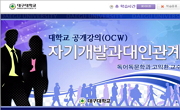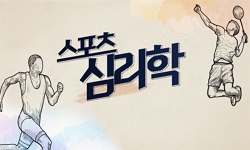본 연구는 지역아동센터 아동을 중심으로 만화기법을 이용한 집단미술치료가 정서장애아동의 대인관계향상과 공격성 감소에 미치는 영향을 알아보고자 하였다. 본 연구는 2008년 6월23일에 ...
http://chineseinput.net/에서 pinyin(병음)방식으로 중국어를 변환할 수 있습니다.
변환된 중국어를 복사하여 사용하시면 됩니다.
- 中文 을 입력하시려면 zhongwen을 입력하시고 space를누르시면됩니다.
- 北京 을 입력하시려면 beijing을 입력하시고 space를 누르시면 됩니다.
만화기법을 이용한 집단미술치료가 정서장애아동의 대인관계향상과 공격성 감소에 미치는 영향 : 지역아동센터 아동을 중심으로 = The study on the effects of group art therapy using Cartoon Techniques on the improvement of interpersonal relations and the reduction of aggression of emotionally disturbed children : focused on the children in the Community Child Welfare Center
한글로보기https://www.riss.kr/link?id=T11614379
- 저자
-
발행사항
익산 : 원광대학교 동서보완의학대학원, 2009
-
학위논문사항
학위논문(석사) -- 원광대학교 동서보완의학대학원 , 예술치료학과 미술치료 전공 , 2009. 2
-
발행연도
2009
-
작성언어
한국어
- 주제어
-
발행국(도시)
전북특별자치도
-
형태사항
xii, 143 p. ; 26cm
-
일반주기명
지도교수:정동훈, 김혜숙
- 소장기관
-
0
상세조회 -
0
다운로드
부가정보
국문 초록 (Abstract)
본 연구는 2008년 6월23일에 G시에 위치한 A지역아동센터의 아동 중 공격성 검사를 실시하여 점수가 높은 아동을 8명 선별하여 2008년 7월8일에 PAS-C검사와 K-HTP검사를 실시하였으며, 2008년 7월11일부터 10월2일까지 총 22회기 집단미술치료를 실시하였다.
연구도구로는 2008년 변창진 교수가 만든 초등학교학생용 인성검사지(PAS-C) 하위 요인 중 대인관계와 관련하여 동조성, 사회성, 자폐성향 점수로 제한하여 실시하였으며, 공격성을 측정하기 위하여 Buss & Durkee(1957)가 공격성 및 적의성을 측정하기 위하여 제작한 것을 노안녕(1983)이 번안한 것을 참고로 김덕호(2000)가 하위영역에 맞게 정의하고 문항수를 조정하였으며, 이를 정은자(2005)가 초등학교 아동의 언어에 맞게 수정한 공격성 검사도구를 사용하였다.
연구문제는 다음과 같다.
첫째, 만화기법을 이용한 집단미술치료가 정서장애아동의 대인관계 향상에 영향을 주는가를 알아본다.
둘째, 만화기법을 이용한 집단미술치료가 정서장애아동의 공격성 감소에 영향을 주는가를 알아본다.
연구결과는 만화기법을 이용한 집단미술치료가 정서장애아동의 대인관계향상과 공격성 감소에 영향이 있는 것으로 나타났다. 대인관계는 동조성이 21.3, 사회성은 19.8상승하였으며, 자폐성향은 34.6 감소하였다. 공격성은 신체적 공격성과 수동적 공격성은 2.0의 감소를 보였으며, 언어적 공격성은 2.12의 감소를 보였다.
아동은 만화라는 매개물을 통하여 서로의 생각을 나누고 공유함으로써 관계형성에 있어서 긍정적 결과를 가져왔으며, 동조성, 사회성, 자폐성향에서 긍정적인 변화가 있는 것으로 나타났고, 만화를 통해 자신의 공격성을 자각하고 통찰함으로써 신체적, 언어적, 간접적, 수동적 공격성에서 변화가 있는 것으로 나타났다.
따라서 만화기법을 이용한 집단미술치료 프로그램은 정서장애아동의 대인관계와 공격성에 영향을 주고 있음을 알 수 있다.
본 연구는 지역아동센터 아동을 중심으로 만화기법을 이용한 집단미술치료가 정서장애아동의 대인관계향상과 공격성 감소에 미치는 영향을 알아보고자 하였다.
본 연구는 2008년 6월23일에 G시에 위치한 A지역아동센터의 아동 중 공격성 검사를 실시하여 점수가 높은 아동을 8명 선별하여 2008년 7월8일에 PAS-C검사와 K-HTP검사를 실시하였으며, 2008년 7월11일부터 10월2일까지 총 22회기 집단미술치료를 실시하였다.
연구도구로는 2008년 변창진 교수가 만든 초등학교학생용 인성검사지(PAS-C) 하위 요인 중 대인관계와 관련하여 동조성, 사회성, 자폐성향 점수로 제한하여 실시하였으며, 공격성을 측정하기 위하여 Buss & Durkee(1957)가 공격성 및 적의성을 측정하기 위하여 제작한 것을 노안녕(1983)이 번안한 것을 참고로 김덕호(2000)가 하위영역에 맞게 정의하고 문항수를 조정하였으며, 이를 정은자(2005)가 초등학교 아동의 언어에 맞게 수정한 공격성 검사도구를 사용하였다.
연구문제는 다음과 같다.
첫째, 만화기법을 이용한 집단미술치료가 정서장애아동의 대인관계 향상에 영향을 주는가를 알아본다.
둘째, 만화기법을 이용한 집단미술치료가 정서장애아동의 공격성 감소에 영향을 주는가를 알아본다.
연구결과는 만화기법을 이용한 집단미술치료가 정서장애아동의 대인관계향상과 공격성 감소에 영향이 있는 것으로 나타났다. 대인관계는 동조성이 21.3, 사회성은 19.8상승하였으며, 자폐성향은 34.6 감소하였다. 공격성은 신체적 공격성과 수동적 공격성은 2.0의 감소를 보였으며, 언어적 공격성은 2.12의 감소를 보였다.
아동은 만화라는 매개물을 통하여 서로의 생각을 나누고 공유함으로써 관계형성에 있어서 긍정적 결과를 가져왔으며, 동조성, 사회성, 자폐성향에서 긍정적인 변화가 있는 것으로 나타났고, 만화를 통해 자신의 공격성을 자각하고 통찰함으로써 신체적, 언어적, 간접적, 수동적 공격성에서 변화가 있는 것으로 나타났다.
따라서 만화기법을 이용한 집단미술치료 프로그램은 정서장애아동의 대인관계와 공격성에 영향을 주고 있음을 알 수 있다.
다국어 초록 (Multilingual Abstract)
Eight children were selected as subjects among those who had scored high on the aggression test executed at the A Community Child Welfare Center in G city. The PAS-C test and the K-HTP test were evaluated on July 8, 2008, and the children received the group art therapy twenty-two times from July 11, to October 2, 2008.
I used two types of tests to check the changes in the children. The first test was the PAS-C (Personal Assessment System for Children) which was designed by Dr. C. J. Byun (2008). This test was initially designed for elementary students and measured the children’s interpersonal relations. The second test measured aggression in the children; I used the modified version of the test created by Buss and Durkee (1957). Among many parts of Buss and Durkee's test, I used the sections used to test conformity, sociability, and autism. This test was designed to measure aggression and hostility. This test was modified first by Ahn young Noh in 1983 and by Duk Ho Kim in 2000. Eun Jah Chung revised and modified the questions in these tests in 2005 so that elementary students could more easily understand the questions. I used all these studies as research tools in my experiment.
This study sought to answer the following questions: 1) Does the group art therapy, which uses cartoon techniques, have any effect on the improvement of interpersonal relations of emotionally disturbed children? and 2) Does the group art therapy, which uses cartoon techniques, have any effect on the reduction of aggression of emotionally disturbed children?
The results I observed in the children were positive. I noticed a significant improvement of interpersonal relations because the children learned a constructive way to share each other’s thoughts through the medium of cartoons. I also noticed that the therapy produced positive changes in the children’s conformity, sociability, and autism. The therapy also brought about changes in physical, linguistic, indirect, passive aggression in the children by helping them realize and see through their own aggression through cartoons.
Therefore, the experiment was a success. The group art therapy, which included cartoon techniques, did help improve the interpersonal relations and reduce the aggression of emotionally disturbed children.
The purpose of this study is to investigate the effects of group art therapy, which uses cartoon techniques, on the improvement of interpersonal relations and the reduction of aggression. Especially, this study focuses on the emotionally disturbed chi...
The purpose of this study is to investigate the effects of group art therapy, which uses cartoon techniques, on the improvement of interpersonal relations and the reduction of aggression. Especially, this study focuses on the emotionally disturbed children in the community child welfare center.
Eight children were selected as subjects among those who had scored high on the aggression test executed at the A Community Child Welfare Center in G city. The PAS-C test and the K-HTP test were evaluated on July 8, 2008, and the children received the group art therapy twenty-two times from July 11, to October 2, 2008.
I used two types of tests to check the changes in the children. The first test was the PAS-C (Personal Assessment System for Children) which was designed by Dr. C. J. Byun (2008). This test was initially designed for elementary students and measured the children’s interpersonal relations. The second test measured aggression in the children; I used the modified version of the test created by Buss and Durkee (1957). Among many parts of Buss and Durkee's test, I used the sections used to test conformity, sociability, and autism. This test was designed to measure aggression and hostility. This test was modified first by Ahn young Noh in 1983 and by Duk Ho Kim in 2000. Eun Jah Chung revised and modified the questions in these tests in 2005 so that elementary students could more easily understand the questions. I used all these studies as research tools in my experiment.
This study sought to answer the following questions: 1) Does the group art therapy, which uses cartoon techniques, have any effect on the improvement of interpersonal relations of emotionally disturbed children? and 2) Does the group art therapy, which uses cartoon techniques, have any effect on the reduction of aggression of emotionally disturbed children?
The results I observed in the children were positive. I noticed a significant improvement of interpersonal relations because the children learned a constructive way to share each other’s thoughts through the medium of cartoons. I also noticed that the therapy produced positive changes in the children’s conformity, sociability, and autism. The therapy also brought about changes in physical, linguistic, indirect, passive aggression in the children by helping them realize and see through their own aggression through cartoons.
Therefore, the experiment was a success. The group art therapy, which included cartoon techniques, did help improve the interpersonal relations and reduce the aggression of emotionally disturbed children.
목차 (Table of Contents)
- Ⅰ. 서론 = 1
- 1. 연구의 필요성 = 1
- 2. 연구 문제 = 4
- 3. 용어의 정의 = 4
- Ⅱ. 이론적 배경 = 7
- Ⅰ. 서론 = 1
- 1. 연구의 필요성 = 1
- 2. 연구 문제 = 4
- 3. 용어의 정의 = 4
- Ⅱ. 이론적 배경 = 7
- 1. 만화기법 = 7
- 가. 만화의 개념 = 7
- 나. 만화의 유형 = 10
- 다. 만화기법의 치료적 성격 = 13
- 2. 정서장애아동의 대인관계와 공격성 = 17
- 가. 정서장애아동 = 17
- 나. 대인관계 = 20
- 다. 공격성 = 23
- 3. 지역아동센터 = 28
- 가. 지역아동센터의 개념 = 28
- 나. 지역아동센터 아동 = 30
- Ⅲ. 연구 방법 = 32
- 1. 연구대상 = 32
- 2. 연구 도구 = 34
- 3. 연구 절차 = 38
- 4. 만화기법 집단미술치료 프로그램 = 39
- 5. 자료 처리 = 46
- Ⅳ. 연구 결과 = 47
- 1. PAS-C 사전/사후 검사결과 = 47
- 2. 공격성의 사전/사후 검사 결과 = 51
- 3. 회기별 활동 분석 = 58
- 4. K-HTP 분석 결과 = 116
- Ⅴ. 논의 = 124
- Ⅵ. 결론 및 제언 = 132
- 참고문헌 = 134












